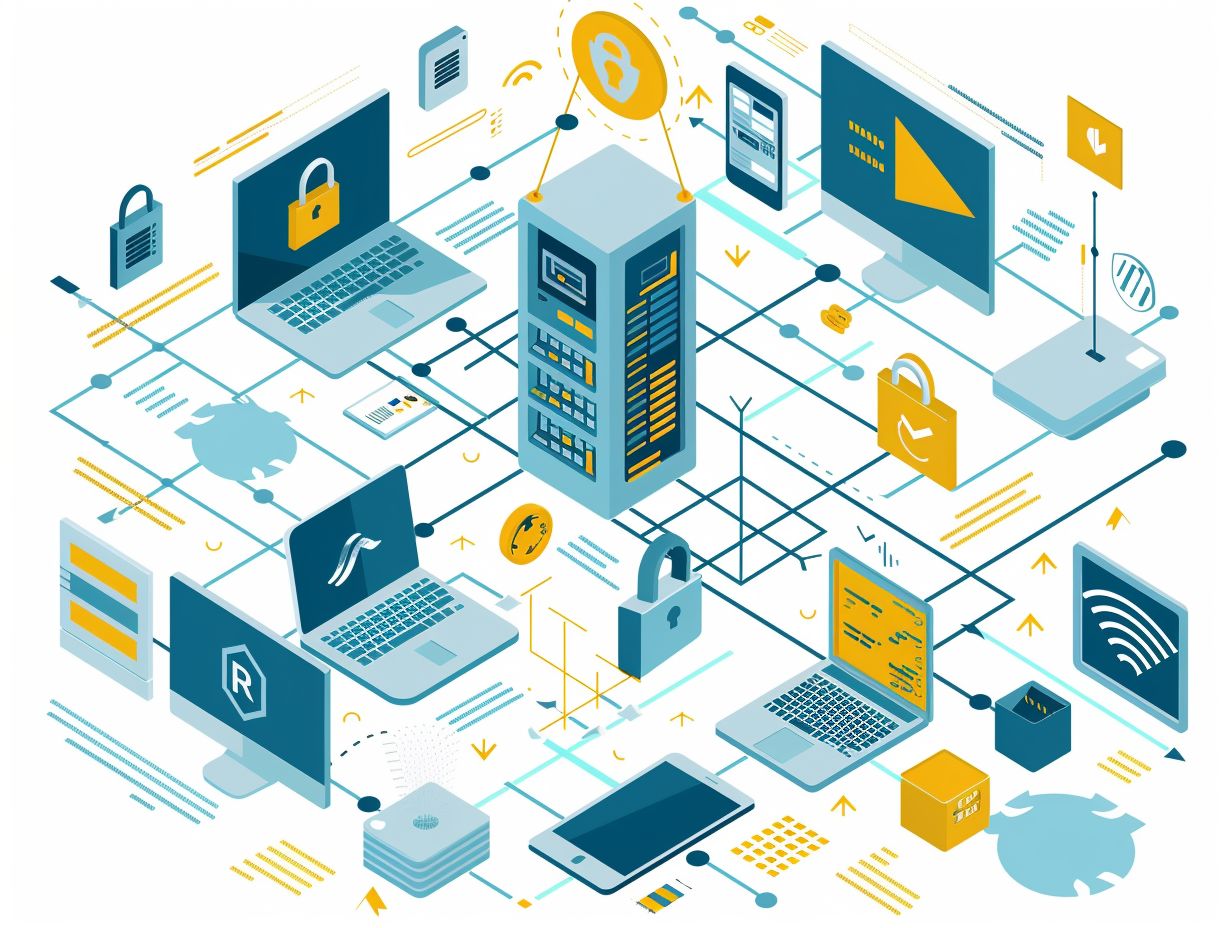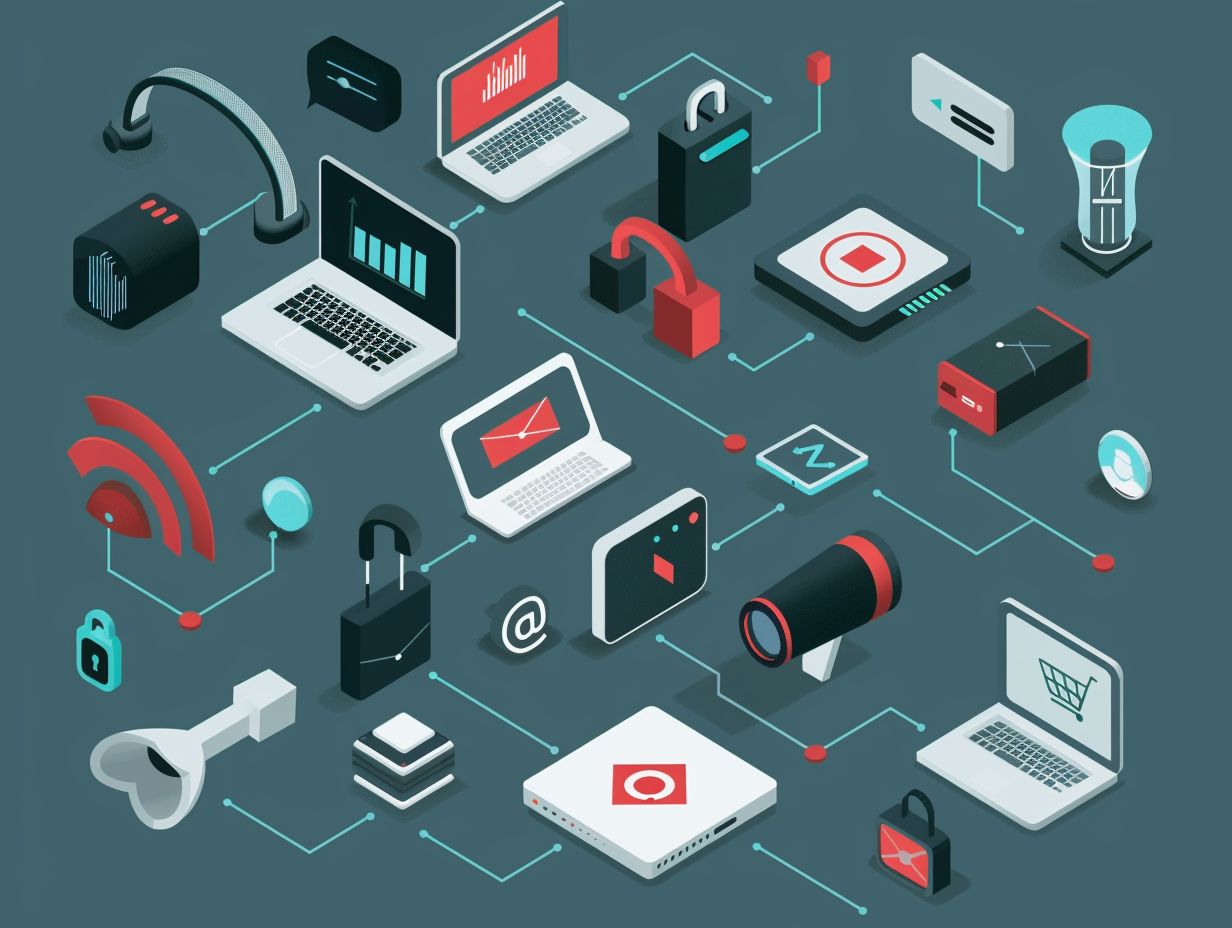In today’s digital age, you must recognize the critical importance of securing collaboration solutions. Given the escalating cyber threats and data breaches, it becomes imperative for organizations to adopt industry best practices to safeguard their communication and collaboration tools. Understanding the role of collaboration technologies in the CCNA is crucial for staying ahead in the ever-evolving landscape of cybersecurity.
Take proactive measures such as robust authentication protocols and routine system updates and patching to fortify security. Compliance with pertinent regulations is non-negotiable to mitigate risks and potential consequences.
This article will delve into the optimal practices for securing collaboration solutions, with a specific emphasis on CCNA.
Key Takeaways:

Overview of CCNA
CCNA, or Cisco Certified Network Associate, is a globally recognized certification that validates your ability to install, configure, operate, and troubleshoot medium-sized routed and switched networks. This certification is essential for IT professionals like yourself who are aiming to enhance their networking skills and advance their careers.
Achieving a CCNA certification not only showcases your proficiency in networking fundamentals and technologies but also demonstrates your dedication to excellence in the IT field. This credential opens up a multitude of opportunities for you, from improved job prospects to potentially higher salaries. Companies benefit greatly from having employees with CCNA certification, as they can effectively design and implement Cisco networking solutions, leading to enhanced operational efficiency and minimized downtime. In today’s competitive IT industry, holding a CCNA certification can differentiate you from others and indicate your expertise in network infrastructure.
Importance of Securing Collaboration Solutions
Ensuring the security of collaboration solutions like Cisco Webex is crucial for organizations to safeguard their communication channels and maintain data integrity. Implementing strong security measures not only protects sensitive information but also increases user trust and confidence in the system.
Potential Risks and Consequences
Insufficient security measures in collaboration solutions can expose your organization to various risks, such as data breaches, unauthorized access, and compromised communication channels. These vulnerabilities may result in significant consequences, including financial losses, damage to reputation, and legal liabilities.
Using insecure collaboration solutions could lead to the exposure of sensitive information, theft of intellectual property, and disruption of business operations. Cybercriminals can take advantage of these weaknesses to introduce malware, steal valuable data, or disrupt critical systems. A security breach in collaboration platforms has the potential to erode customer trust, leading to customer attrition and a decrease in market share. Therefore, it is essential to implement robust security measures and encryption protocols to mitigate these potential risks.
Best Practices for Securing Collaboration Solutions

Utilizing best practices for securing collaboration solutions is imperative for safeguarding sensitive information, upholding system integrity, and facilitating smooth communication among users. By integrating robust security features and access control mechanisms, organizations can establish a secure and dependable collaboration environment.
Implementing Strong Authentication
Strong authentication mechanisms are essential for ensuring that only authorized users can access collaboration solutions. By implementing multi-factor authentication and user verification protocols, organizations can improve system security and mitigate the risk of unauthorized access.
Robust identity verification processes strengthen security by verifying the identities of individuals seeking to access sensitive data or resources. Access control measures, like role-based permissions and privileged access management, help prevent unauthorized users from compromising system integrity. These security layers not only protect confidential information but also promote compliance and instill trust in users that their data is well-protected.
Utilizing Encryption
Utilizing encryption is a foundational security practice to protect data transmitted through collaboration solutions. By encrypting both communication channels and stored information, organizations can effectively prevent unauthorized access, maintain data confidentiality, and ensure compliance with security protocols.
Integrating encryption not only secures sensitive data like customer information and financial records but also acts as a crucial tool in safeguarding intellectual property and trade secrets. Encryption plays a pivotal role in shielding critical infrastructure from cyber threats and potential data breaches, which are increasingly prevalent in today’s digital environment. It is essential for organizations of all sizes to prioritize encryption within their collaboration solutions to mitigate risks and uphold trust among stakeholders.
Monitoring and Auditing
Regularly monitoring and auditing collaboration solutions is essential for detecting security vulnerabilities, tracking user activities, and ensuring compliance with security guidelines and regulations. By implementing effective monitoring tools and audit procedures, organizations can proactively identify and address security threats.
Continuous monitoring provides real-time visibility into the network, applications, and user behavior, offering timely alerts for any suspicious activities. This proactive approach enables a swift response to potential security incidents, minimizing the impact of breaches and unauthorized access.
Adhering to best practices for security assessment involves conducting regular vulnerability scans, penetration testing, and configuration reviews to identify weaknesses and enhance the overall security posture. Compliance monitoring guarantees that organizations follow industry standards and regulatory requirements, thereby reducing the risk of non-compliance penalties.
In case of security breaches, having incident response protocols in place is crucial to containing the threat, investigating the incident, and implementing corrective actions to prevent future occurrences.
Regular Updates and Patches

Ensuring that your systems are regularly updated with the latest patches is essential for addressing security vulnerabilities, optimizing system performance, and upholding the integrity of your collaboration solutions.
By keeping abreast of the most recent software releases and security patches, your organization can proactively mitigate risks and improve the overall reliability of your systems.
Timely updates are a critical component in safeguarding sensitive data and fortifying your defenses against cyber threats. System updates not only bolster security measures but also contribute to a seamless user experience by resolving bugs and enhancing system functionality.
These updates are specifically designed to rectify potential vulnerabilities that malicious actors could exploit, strengthening your system’s defenses.
By prioritizing effective patch management strategies, your organization can effectively protect your collaboration tools from emerging security threats and maintain a proactive stance towards software maintenance.
Ensuring Compliance with Regulations
Ensuring compliance with relevant regulations and privacy laws is crucial for organizations that implement collaboration solutions. By aligning system design and security measures with regulatory requirements, companies can mitigate legal risks, protect user privacy, and uphold industry standards.
Understanding Relevant Regulations
To ensure compliance with regulations, your organization must have a thorough understanding of the specific security criteria, data protection requirements, and legal frameworks that govern the use of collaboration solutions. By conducting comprehensive assessments and audits, you can pinpoint any compliance gaps and put in place necessary controls.
This proactive approach serves not only to mitigate potential risks but also to ensure the proper protection of sensitive information. It is essential to adhere to industry-specific regulations such as HIPAA, GDPR, or PCI DSS to maintain trust with customers and partners. Implementing robust security measures, encryption protocols, and access controls are foundational steps in safeguarding data and fostering a secure collaborative environment.
Given the ever-evolving landscape of compliance, it is crucial for your organization to remain updated on the latest regulatory requirements. This will help you steer clear of penalties and protect your reputation from any potential damage.
Compliance Strategies
Developing effective compliance strategies tailored to your organization’s specific requirements is essential for ensuring regulatory adherence and data protection in collaboration solutions. By integrating compliance measures into your project management processes, you can streamline regulatory compliance and mitigate legal risks.
Aligning security measures with your organizational needs and compliance frameworks is crucial in enhancing the overall security posture of your collaboration solutions. Understanding the intricacies of various compliance standards such as GDPR, HIPAA, or ISO 27001 enables your organization to address specific data protection requirements effectively.
By incorporating compliance considerations early on in your project lifecycle, you can proactively address potential security vulnerabilities and ensure that the final collaboration solution meets all regulatory and compliance obligations.
Frequently Asked Questions

What are the best practices for securing collaboration solutions?
The following are some of the best practices for securing collaboration solutions:
- Implement strong authentication methods such as multi-factor authentication.
- Regularly update and patch all collaboration platforms and applications.
- Use end-to-end encryption for all data transmissions.
- Restrict access and permissions to only authorized users.
- Regularly backup all collaboration data and have a disaster recovery plan in place.
- Train employees on cybersecurity awareness and safe usage of collaboration tools.
Why is securing collaboration solutions important for CCNA professionals?
Securing collaboration solutions is important for CCNA professionals because it helps protect sensitive data and maintain the integrity of the network. Any security breaches or data leaks can greatly damage the reputation of a CCNA professional and their organization.
What are the risks of not securing collaboration solutions?
Not securing collaboration solutions can lead to various risks such as:
- Data breaches and leaks
- Unauthorized access to sensitive information
- Loss of trust from clients and partners
- Legal and financial consequences
- Damage to the organization’s reputation
- Disruption of business operations
What are the common vulnerabilities in collaboration solutions?
Some of the common vulnerabilities in collaboration solutions include:
- Weak authentication methods
- Outdated software and applications
- Unsecured network connections
- Insufficient data encryption
- Employee negligence or lack of awareness
- Malware and phishing attacks
How can CCNA professionals stay updated on the latest security practices for collaboration solutions?
CCNA professionals can stay updated on the latest security practices for collaboration solutions by:
- Attending training and certification programs
- Joining online communities and forums
- Following industry experts and publications
- Participating in webinars and workshops
- Regularly checking for updates from collaboration solution providers
What steps should be taken in case of a security breach in collaboration solutions?
If a security breach occurs in collaboration solutions, the following steps should be taken:
- Immediately isolate the affected systems and devices.
- Change all passwords and revoke access for suspicious accounts.
- Notify the appropriate authorities and report the incident.
- Perform a thorough investigation to determine the cause of the breach.
- Implement measures to prevent future breaches.
- Communicate the incident to all parties involved and provide necessary support.
